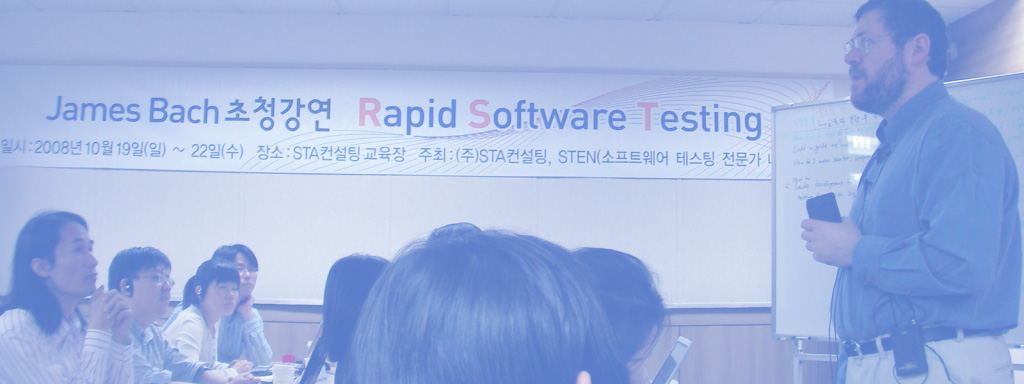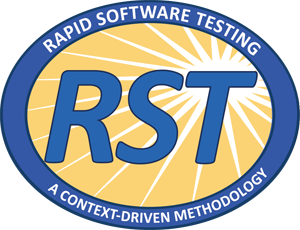Rapid Software Testing fosters what you must have to test well: a love of testing.
By this, we don’t mean the love of paperwork and button-pushing. Instead, we’re talking about learning, analyzing, finding trouble, and helping people. That’s the heart of testing. That’s what Rapid Software Testing (RST) focuses on.
How do you achieve great testing?
- How do you get yourself—or your people—excited about testing?
- How do you sustain that excitement?
- How do you use that energy to help people become better testers?
- How do you foster respect for the testing process?
- How do you cultivate the kind of testing that is worthy of respect?
Rapid Software Testing answers these questions.
RST is a way of doing, teaching, and talking about testing that gives responsible people the freedom and the tools to do testing well. Whether you are a tester, a developer, a manager, or anyone else for whom testing matters, RST gives you a lot to love about testing.

If you want to adopt RST for yourself, you don’t need anyone’s permission or coordination. That’s a personal matter.
But if you want a team or a whole company to adopt RST, that’s going to require patient, persistent leadership.
Why do we test?
We test to develop a comprehensive understanding of the product and the risks around it. We test to find problems that threaten the value of the product, or that threaten the on-time, successful completion of any kind of development work. We test to help the business, managers, and developers decide whether the product they’ve got is the product they want.
Above all, we test because it is the responsible thing to do. We have a duty of care toward our teams, our organizations, our customers, and society itself. Releasing poorly tested software would be a breach of that duty.
“Adopting RST was the best move I made when establishing a testing practice at my organization just over two years ago. Recently my team needed to collaborate with a client’s test team (who employs factory-style testing). This was a great opportunity to discuss RST with them and establish a solid foothold on why it works for us — and why we’ll continue to use it on our upcoming product build with them. I’m positive they’ll see the value by the end of our endeavour together — and maybe they will take back some changes to consider in their own processes.
For anyone new to the RST space, the ability to speak succinctly and confidently about testing and RST is important. Along with reading and practice, attending the RST Coached and RST Managed courses was critical in my ability to do that with these clients.”
—Ashley Palmer, Quality Manager, Modea
How We Teach Our Classes
RST instructors all have at least 20 years of experience in practice, research, teaching, and consulting about testing and software development. We do not make appeals to authority; we speak from our experiences, and we appeal to your experience and intelligence. You control what you think and do, so we encourage you to question and challenge us.

An introduction to this context-driven method of testing any product. New ways to think about how to test rapidly, responsibly and systematically.
RST as practice, we focus on a particular product. We survey it, analyze it, perform tests and report the bugs, and then critique the bug reports.
Excellent testing is an open investigation by skilled technical people. Learn RST thinking skills and become a better test manager.
A systematic expertise-based approach that promotes a culture of craftsmanship and continuous learning.
Risk-based testing is a powerful way to focus testing and to justify the time and energy it takes to test deeply.
Knowing how to construct, explain, and critique a test strategy is the gateway to credibility as a tester.

